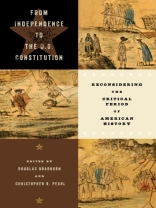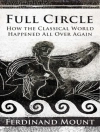The ‘Critical Period’ of American history—the years between the end of the American Revolution in 1783 and the ratification of the U.S. Constitution in 1789—was either the best of times or the worst of times. While some historians have celebrated the achievement of the Constitutional Convention, which, according to them, saved the Revolution, others have bemoaned that the Constitution’s framers destroyed the liberating tendencies of the Revolution, betrayed debtors, made a bargain with slavery, and handed the country over to the wealthy.
This era—what John Fiske introduced in 1880 as America’s ‘Critical Period’—has rarely been separated from the U.S. Constitution and is therefore long overdue for a reevaluation on its own terms. How did the pre-Constitution, postindependence United States work? What were the possibilities, the tremendous opportunities for ‘future welfare or misery for mankind, ‘ in Fiske’s words, that were up for grabs in those years? The scholars in this volume pursue these questions in earnest, highlighting how the pivotal decade of the 1780s was critical or not, and for whom, in the newly independent United States.
As the United States is experiencing another, ongoing crisis of governance, reexamining the various ways in which elites and common Americans alike imagined and constructed their new nation offers fresh insights into matters—from national identity and the place of slavery in a republic, to international commerce, to the very meaning of democracy—whose legacies reverberated through the nineteenth and twentieth centuries and into the present day.
Contributors:Kevin Butterfield, Fred W. Smith National Library for the Study of George Washington at Mount Vernon * Hannah Farber, Columbia University * Johann N. Neem, Western Washington University * Dael A. Norwood, University of Delaware * Susan Gaunt Stearns, University of Mississippi * Nicholas P. Wood, Spring Hill College
Tabella dei contenuti
Acknowledgments
1. Introduction
2. The Constitutional Consequences of Commercial Crisis: The Role of Trade Reconsidered in the Critical Period
3. America’s Court: George Washington’s Mount Vernon in the Critical Period
4. Abolitionists, Congress, and the Atlantic Slave Trade: Before and after Ratification
5. Federalism on the Frontier: Secession and Loyalty in the Trans-Appalachian West
6. ‘Such a Spirit of Innovation’: The American Revolution and the Creation of States
7. Something from Nothing?: Currency and Finance in the Critical Period
8. An Excess of Aristocracy: Democracy and the Fear of Aristocratic Power in the 1780s
9. Epilogue: Turn Down the Volume!
Notes on Contributors
Index
Circa l’autore
Douglas Bradburn is President and CEO of George Washington’s Mount Vernon and the author of, among other books, The Citizenship Revolution: Politics and the Creation of the American Union, 1774–1804 (Virginia). Christopher R. Pearl is Associate Professor of History at Lycoming College and the author of Conceived in Crisis: The Revolutionary Creation of an American State (Virginia).












